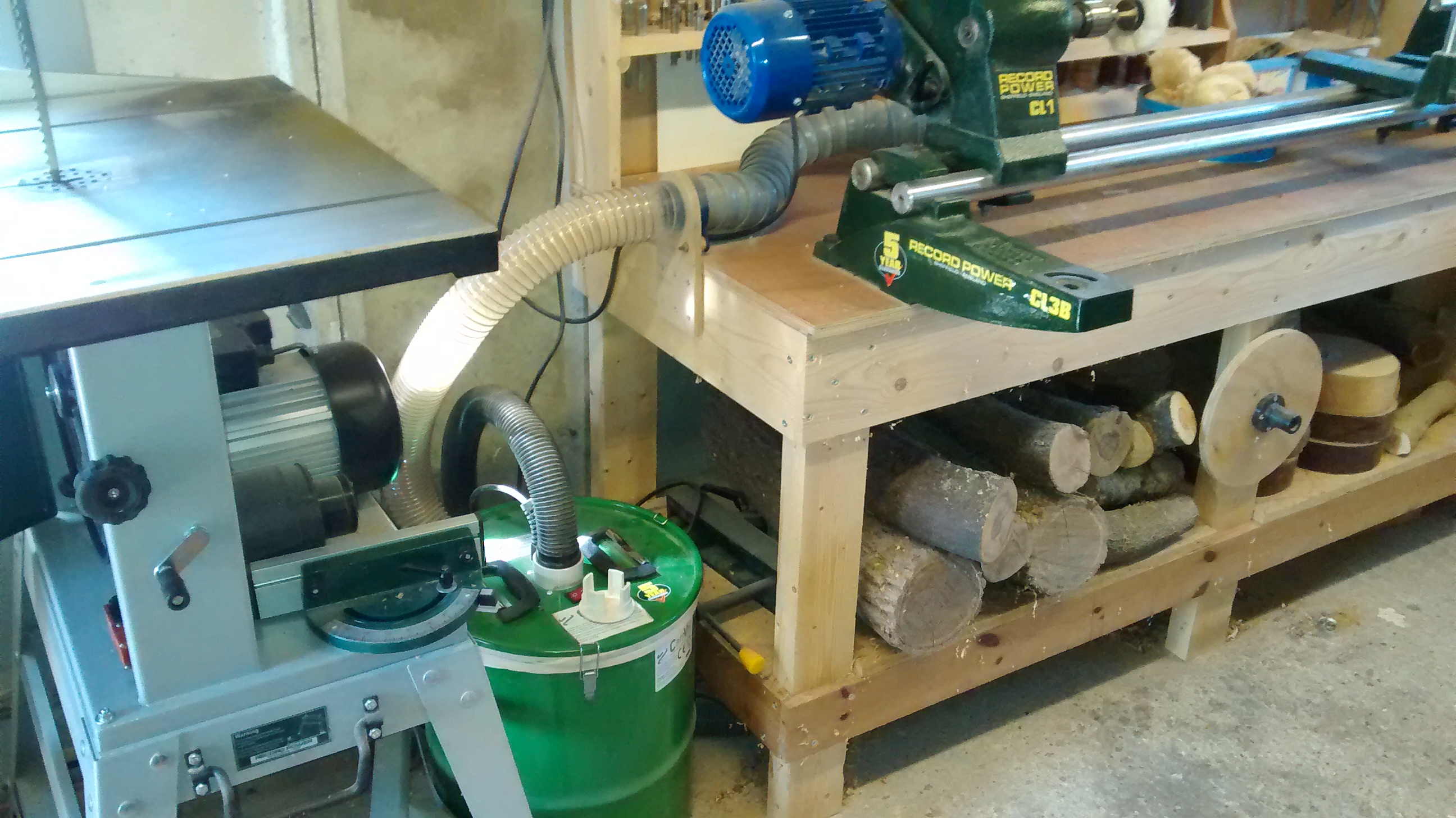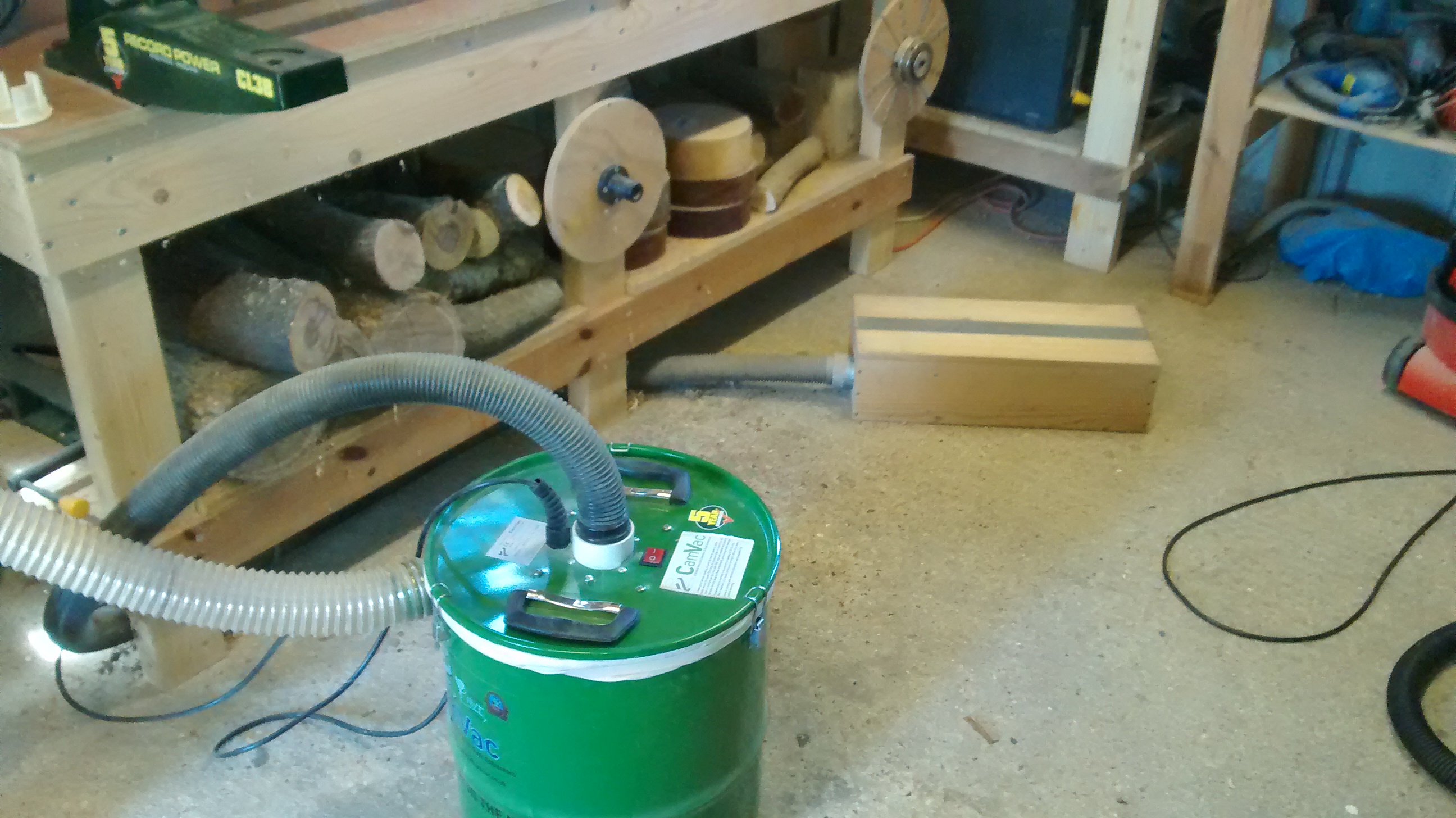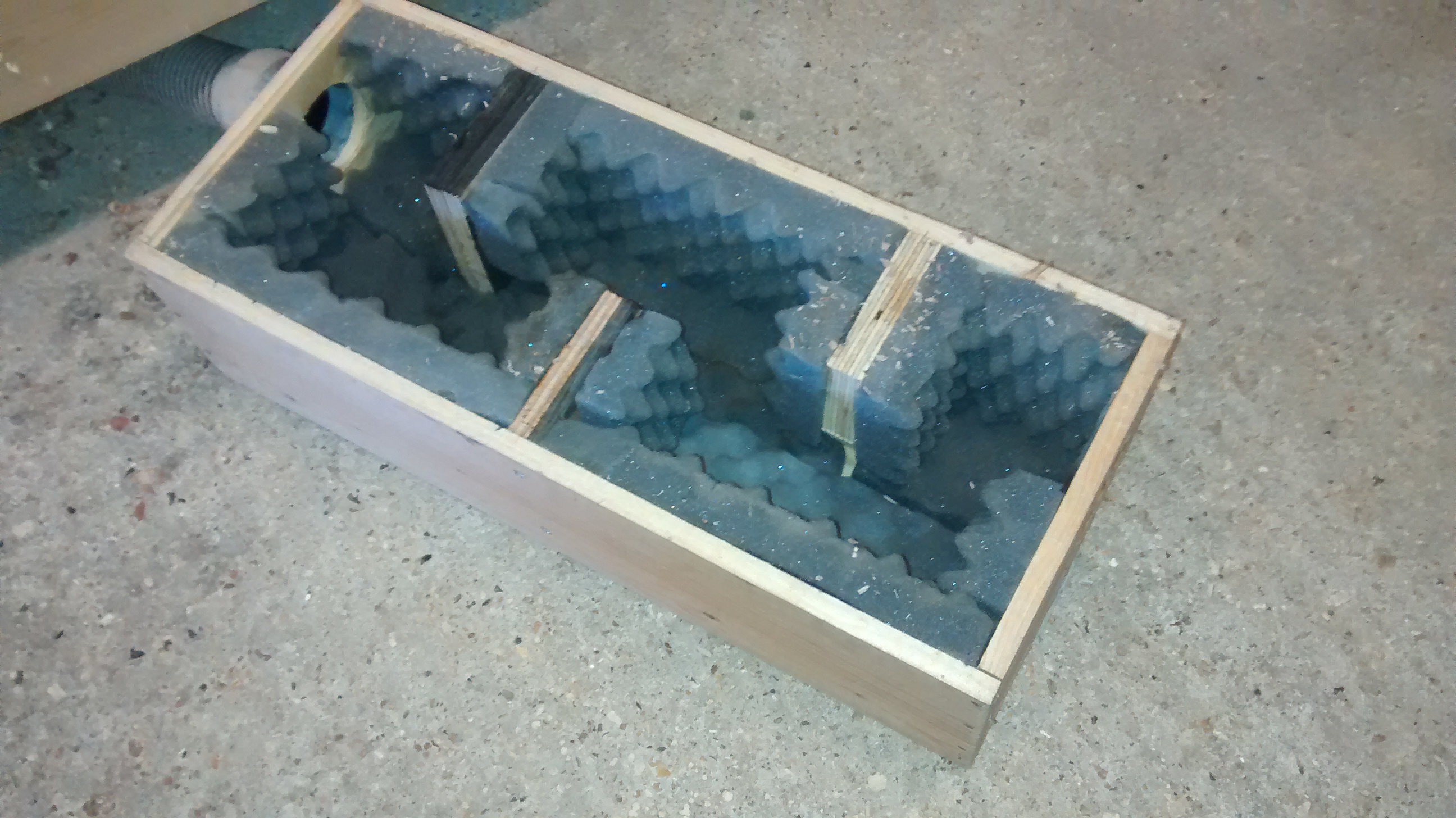selectortone
Still waking up not dead in the morning
Rather than post to a six-year old thread I thought I'd start a new one. This is probably old hat to the regulars but I thought it might be of interest to the newer turners (like me!) here...
I copied the idea from what the guys at my club built to reduce noise from their Camvac dust extractor during demos.
Here's my Camvac 286 in it's normal place in my workshop. Handy for the lathe and the adjacent bandsaw:

The outlet hose disappears under the bench and is connected to a silencer box:

Here it is with the lid removed. It's just an old plywood box that was knocking round the workshop (I knew it would come in handy for something!) to which I added some baffles and some scrap acoustic foam. The outlet hose connects to one end and the exhaust exits from the other via a hole covered with a grill to stop any small furry creatures deciding it might be a nice place to sleep:

The Camvac isn't particularly noisy to start with - my Henry shopvac is a lot noisier - and with this system it is really quiet. No apparent loss of suction.
I copied the idea from what the guys at my club built to reduce noise from their Camvac dust extractor during demos.
Here's my Camvac 286 in it's normal place in my workshop. Handy for the lathe and the adjacent bandsaw:

The outlet hose disappears under the bench and is connected to a silencer box:

Here it is with the lid removed. It's just an old plywood box that was knocking round the workshop (I knew it would come in handy for something!) to which I added some baffles and some scrap acoustic foam. The outlet hose connects to one end and the exhaust exits from the other via a hole covered with a grill to stop any small furry creatures deciding it might be a nice place to sleep:

The Camvac isn't particularly noisy to start with - my Henry shopvac is a lot noisier - and with this system it is really quiet. No apparent loss of suction.


































